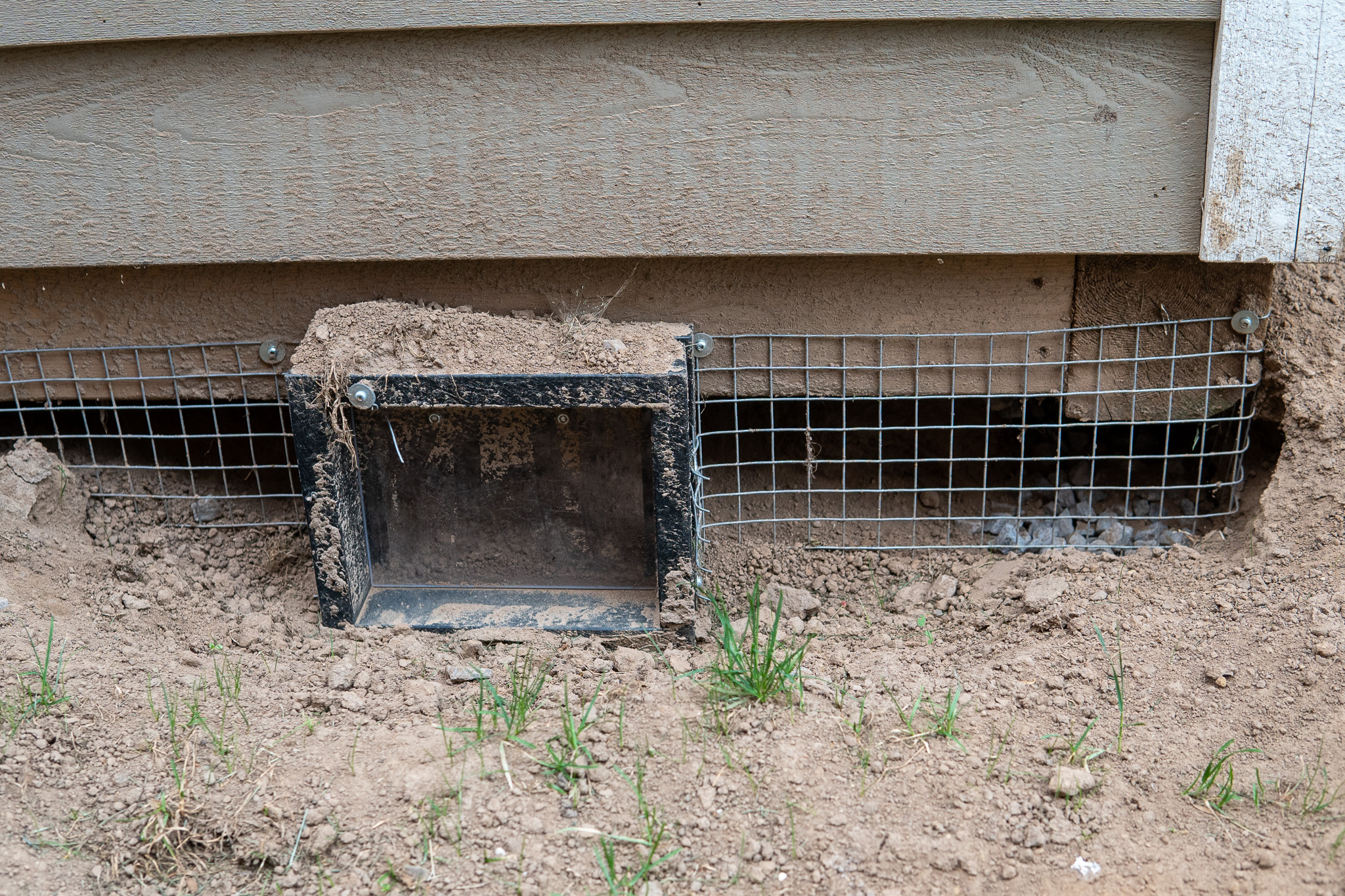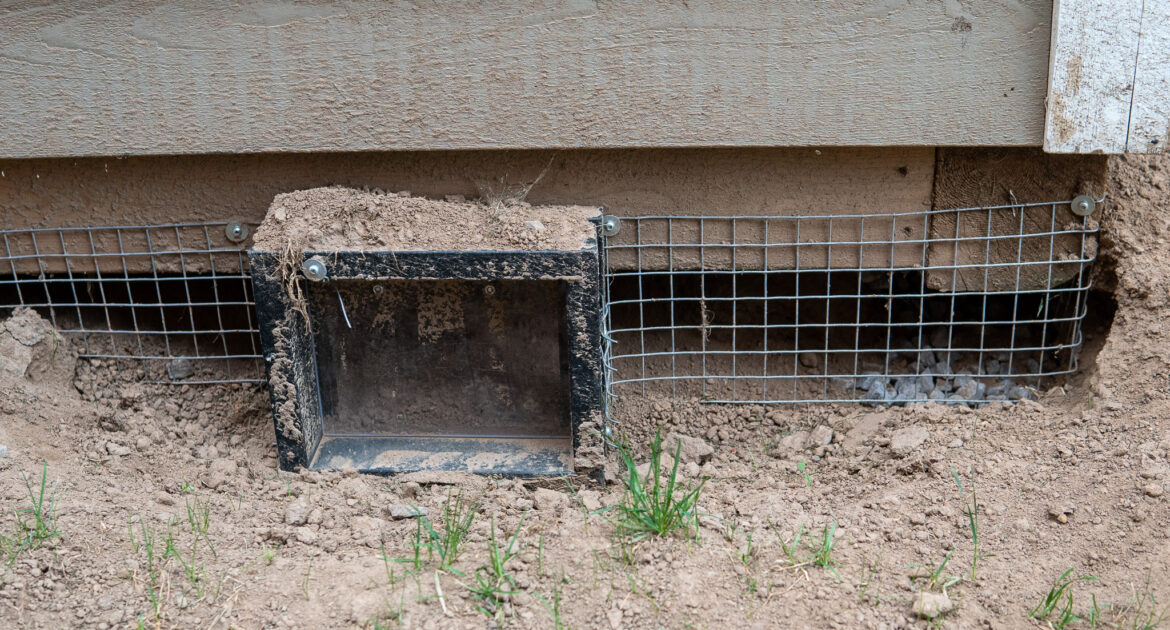As humans continue their expansion into natural habitats, wildlife struggle to adapt to suburban environments. One species that has surprisingly thrived in these environments is the striped skunk. These small animals may seem like nuisances when they raid garbage bins or release their notorious odour, but they serve an important role in controlling insect and rodent populations.
Understanding the behaviour of striped skunks can help homeowners prevent interactions with these wild animals and ultimately lead to successful skunk removal in York. From denning habits to feeding preferences, this species has developed unique adaptations for life in the suburbs. By learning how to keep skunks away, we can minimize conflicts and coexist with these fascinating animals. Join us as our experts at Skedaddle explore the intriguing world of these striped mammals.
Understanding Striped Skunk Behaviour
Striped skunks are nocturnal animals; they are most active during the evening and night. Around dusk, they begin their hunt for food and mates, becoming a familiar sight in many residential neighbourhoods.
Survival Tactics in Suburban Environments
Unlike many wild animals, skunks are unfazed by the presence of humans and will often create dens under houses, sheds, or woodpiles. This behaviour speaks to their adaptability and resourcefulness when it comes to finding safe places to live.
One of their most defining traits, of course, is the strong odour they release when threatened. This scent serves as a powerful deterrent for potential predators and inquisitive homeowners trying to coax them out of the garden. Despite this notorious defence, they are generally docile unless they feel threatened.
Feeding Habits
When it comes to sustenance, striped skunks are among the most adaptable of wildlife. They are omnivores, with dietary preferences that span everything from insects and small rodents to fruits and nuts. This robust and varied diet allows them to thrive in a multitude of environments.
Unfortunately, their food search often leads them to our trash bins, pet food bowls, and vegetable gardens. Although it may be unnerving to find one in your backyard, it’s crucial to remember they’re just searching for their next meal. With this understanding, you can make changes to dissuade them from frequenting your property.
Our Role in Wildlife Control
As homeowners, we can take steps to ensure a harmonious coexistence with these intriguing animals. One of the most effective ways to prevent them from taking refuge on your property is to make their potential dens unappealing. This can be achieved by securing potential entry points to basements, sheds, or other structures with a barrier or fence.
Keeping your trash secure and not leaving pet food out overnight could also dissuade them from foraging around your home. Remember, your local wildlife control experts at Skedaddle are here to help you understand, respect and maintain distance from the local wildlife.
A commitment to understanding striped skunk behaviour can not only minimize any potential conflict but also contribute to a more harmonious relationship between humans and the unique wildlife that makes Skedaddle so special. After all, it’s not only about controlling wildlife but responsibly coexisting with it.
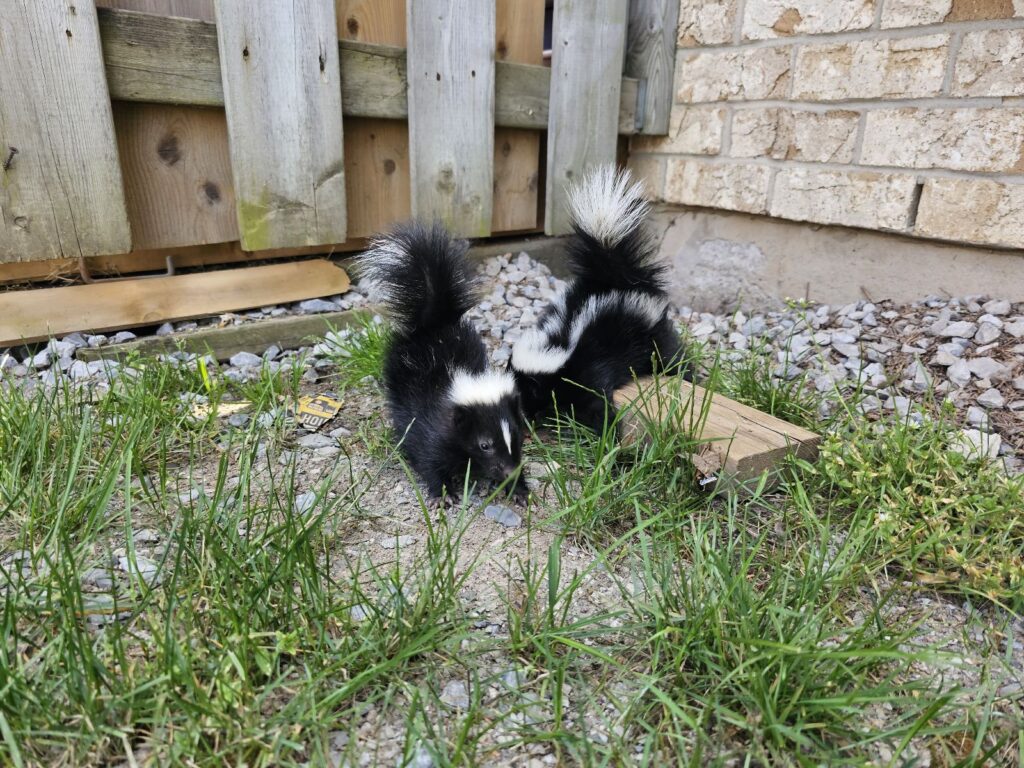
Signs of Striped Skunk Activity: How to Identify Their Presence
Spotting one of these mammals during their active hours is an obvious sign of their presence, but it’s not always that you’ll see them face to face. More often than not, they leave behind other evidence of their activity that can alert you to their presence. Let’s explore some of these telltale signs.
Signature Smell
The first evidence homeowners usually find of activity is their pungent odour. They release a strong, acrid smell when they feel threatened, and this scent can linger for days. If you’re frequently detecting a skunk-like smell around your home or garden, it’s a strong sign that one could be nearby.
Distinctive Digs
These wild animals are known as ‘diggers’ and they leave identifiable signs of their activity in lawns and garden beds. Small, cone-shaped holes in your yard, usually around 3 to 4 inches in diameter, often indicate a thief’s search for insects and grubs. Also, if you notice disrupted turf, it may be due to their digging habit.
Tracks
They have a distinctive five-toed footprint. The prints often show claw marks and are usually about 1 to 3 inches in length. If you come across these distinct tracks on soft soil, sand, or snow around your property, it’s a clear sign of their activity.
Droppings
Droppings can be another clear sign of their presence. They tend to return to the same spot to defecate, starting mini latrines. Their waste is similar to cat feces, typically 1/2 inch in diameter and 1 to 2 inches long. You might also find remains of their meals, such as insect parts, berries, or feathers in their droppings.
By becoming more familiar with these signs, you can better monitor and manage your suburban spaces to reduce the likelihood of unwelcome encounters. However, if you believe one has taken up residence around your property, it’s best to call in Skedaddle’s wildlife control experts. They’ll be able to ensure safe and humane removal, ensuring the safety of both the wildlife and your household.
Remember, our collective efforts in effective wildlife management will ensure a safer, and more harmonious coexistence with the diverse fauna that shares our suburban spaces, and ultimately contribute to the delicate balance of our local ecosystems.
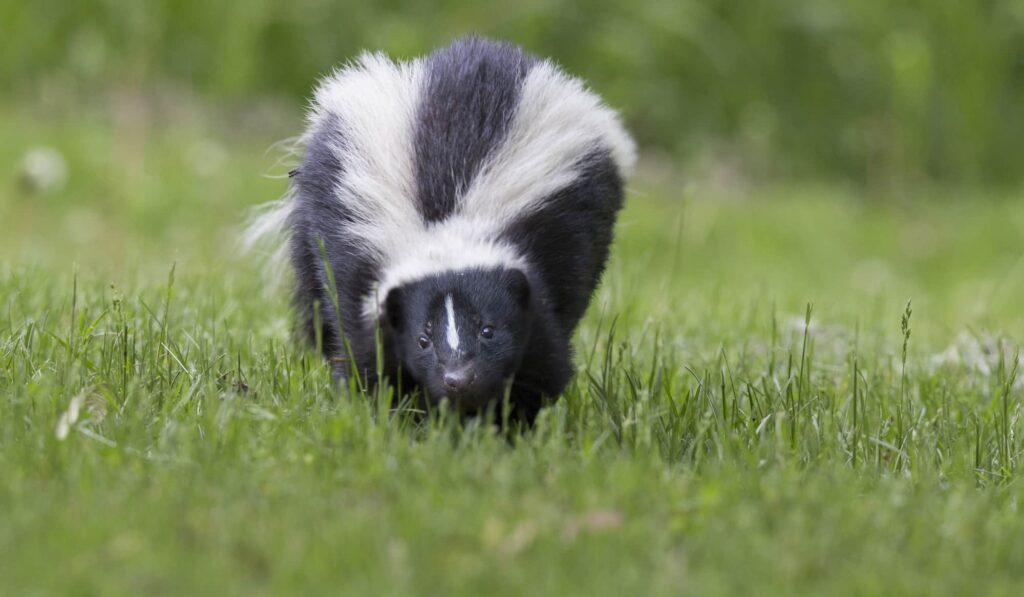
How to Keep Skunks Away
Living in harmony with these animals in the suburban landscape starts with understanding their habits and implementing effective strategies for deterrence. Let’s explore some practical ways to keep them away from your suburban property.
Secure your Trash
Secure your garbage cans with tight-fitting lids to discourage foraging animals. Additionally, placing these containers in sturdy racks or tying them to a firm structure can prevent them from knocking them over to access the garbage inside.
Restrict Food Sources
They are opportunistic eaters. Don’t unintentionally invite them in by leaving pet food outdoors, especially overnight. Securing bird feeders and cleaning up fallen fruits and vegetables from your garden can also reduce potential attractions.
Secure Entry Points
These animals are experts at finding cozy, undisturbed places to build dens – and that might just be underneath your porch or deck. Ensure these spaces are securely blocked by using hardware cloth or metal flashing. Also, consider installing a solid fence at least a foot deep into the ground around your property to deter them.
Create a Skunk-Proof Yard
To make your yard less appealing, keep it clean and free from debris that might provide a good hiding spot. Trim long grasses and thick foliage, remove piles of wood or compost, and keep your garden well-maintained. Lighting up dark corners of your yard can also help, as they prefer to navigate through the shadows.
Use Repellents
Commercial repellents, such as granular repellents and spray solutions, can be effective when used according to the manufacturer’s instructions. These repellents generally either create an unpleasant odour or suggest the presence of a predator, causing them to search for safer territory.
Contact Skedaddle for Skunk Removal in York
Living in the York Region comes with plenty of perks, but striped skunks making themselves at home in your yard isn’t one of them. When it comes to dealing with wildlife, professional intervention is often the safest and most effective option. That’s where Skedaddle Humane Wildlife Control comes in.
The Skedaddle Advantage
Our team at Skedaddle specializes in humane wildlife control. We don’t just remove animals from your property—we make sure they don’t return. Our three-step process involves assessing the situation, removing the intrusive animals, and finally, preventing future infiltration.
How do we do this?
Let’s look at our process in a bit more detail.
- Assess: First, we conduct a complete property inspection to establish the extent of the problem. This includes identifying any potential entry points and existing damage.
- Remove: Our experts then use a hands-off method to safely and humanely remove the animals. We respect these creatures and understand they are just trying to survive in their chosen habitat.
- Prevent: To prevent future visitors, we wildlife-proof your yard by treating it with natural repellents.
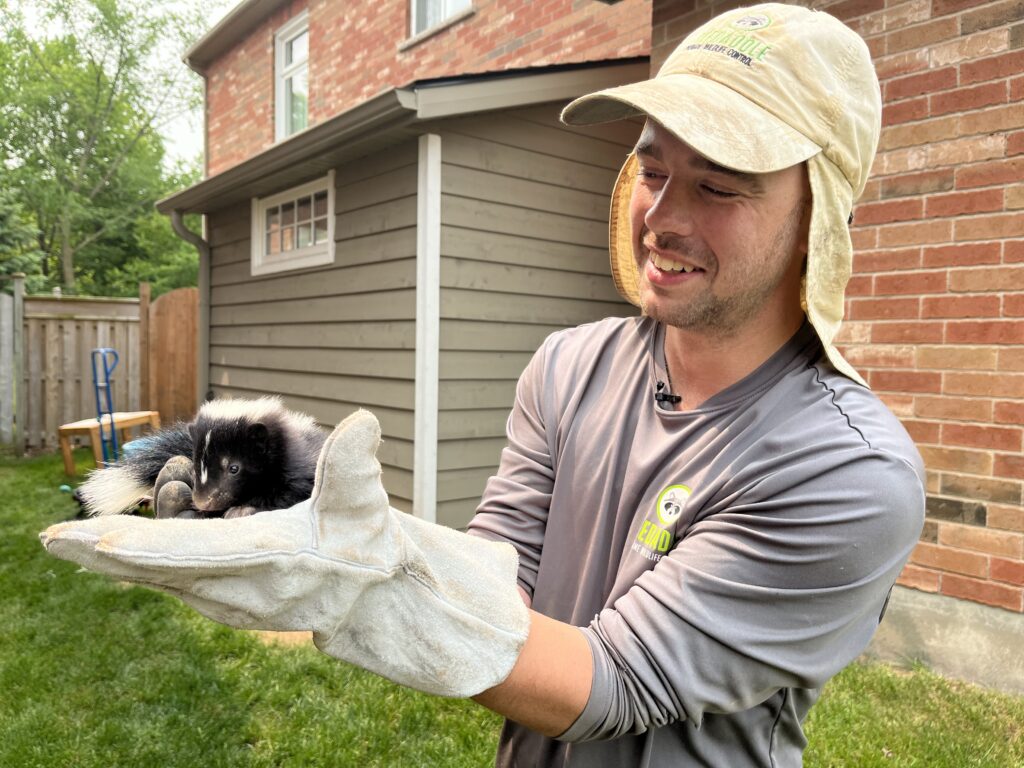
Customer Satisfaction: A Top Priority
Our mission doesn’t end with wildlife removal. We believe in providing our customers with the knowledge they need to deter future encounters. We take the time to educate about wildlife behaviour and habits, running through preventative measures and offering tips for maintaining a safe environment.
Contact Skedaddle today for your wildlife issues. Let us help you maintain a harmonious environment for you and your household, as well as our wildlife friends.
